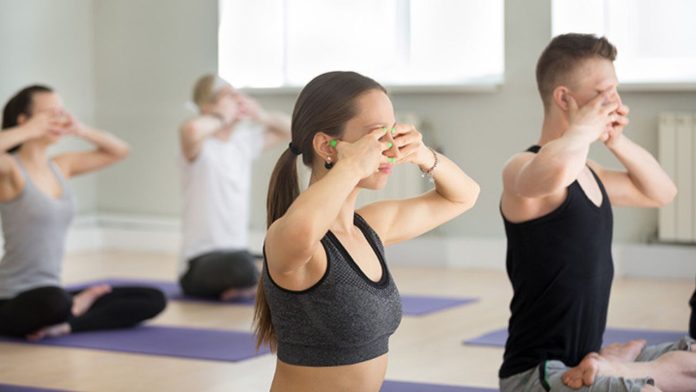You may have trouble breathing if you have a sinus infection. The condition could be highly unpleasant and uncomfortable to live with every day. However, you can reduce nasal obstruction and eliminate aggravating congestion naturally by engaging in yoga for sinusitis. It is possible for sinusitis to linger anywhere from 4 weeks to 12 weeks, or even longer on occasion, which reduces the frequency of breaths that are actually helpful. Yoga poses allow for total flexibility of the mind and body and can improve nasal blood flow and muscle movement. As a result, your nose might clear, you might have a clear path for mucus to drain, and your breathing might become more effortless.
Yoga positions have been shown to be highly calming for sinus congestion. The following are some of the best yoga poses:
1. Humming Bee Breath (Bhramari Pranayama)
Nasal obstruction and mucus buildup brought on by sinusitis can make it difficult to breathe and put you at risk for serious infections. But among the most efficient exercises are yogic postures like Bhramari pranayama (Humming Bee Pranayama), which creates natural vibrations while you hum, causing mucus to drain and clearing the airways to allow for healthy ventilation and airflow within the nose. Therefore, performing this pranayama at least twice a day may aid in clearing your nose and relieving sinus pressure if you feel your nose is stuffed and stiff.
2. Water Cleansing (Jal Neti)
Yoga techniques like Jal Neti have shown to be a simple and practical strategy to clear nasal blockages and lessen breathing difficulties. This exercise, a crucial component of Hatha Yoga, may lessen cold, snoring, and rhinitis symptoms as well as make sinusitis and asthma easier to manage. Additionally, this method aids in reducing lung and influenza-causing respiratory tract illnesses. Therefore, this yogic technique may be very useful in providing you with sinusitis treatment so you may breathe freely.
3. The Shining Skull Breath (Kapalbhati Pranayama)
Since low oxygen saturation can cause hypoxia, it is essential to maintain oxygen saturation in several internal organs such the kidneys, brain, and heart. The kapalbhati pranayama may improve oxygen saturation and aid in the diaphragm’s effective operation, resulting in easy breathing and fewer instances of congestion. With improved cardiovascular and physical health, a smoother exhale, and relaxed heartbeat, this yoga practice may increase blood flow. So you can make sure you’re breathing without feeling suffocated and your inside organs are getting a rich quantity of oxygen to work properly with this sparkling skull pranayama. The added benefit of this yoga practice is that it can give your forehead a natural-looking shine.

 हिंदी
हिंदी






